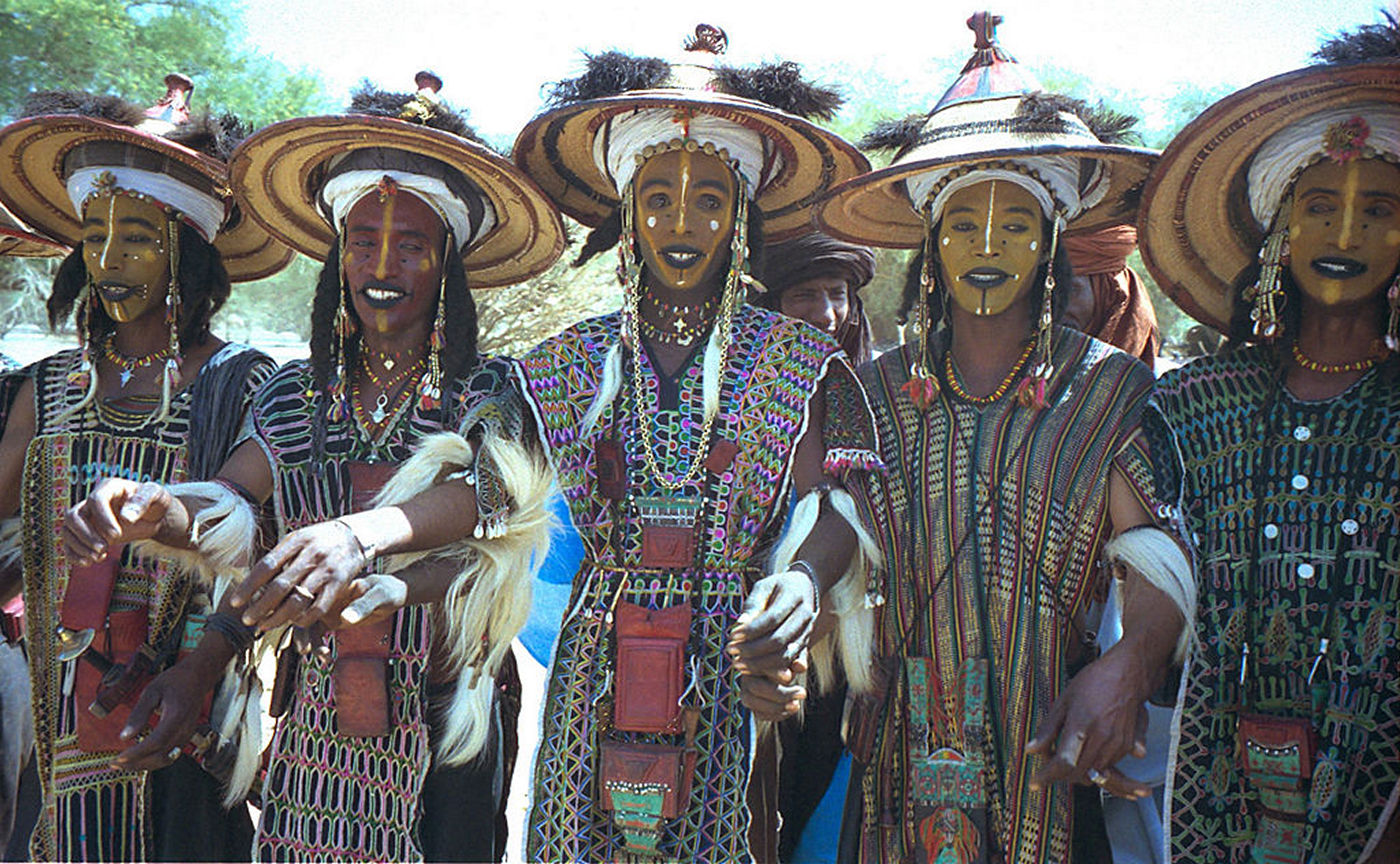 Weird Stuff
Weird Stuff  Weird Stuff
Weird Stuff  Mysteries
Mysteries 10 Tragic Disappearances and Deaths in Joshua Tree National Park
 History
History 10 Ways Childhood Really Sucked in the Old West
 Music
Music 10 Name Origins of Famous Bands from the 1990s
 Religion
Religion 10 Biggest Turnarounds by the Catholic Church
 Weird Stuff
Weird Stuff 10 Unbelievable Times Laws Had Unintended Consequences
 Humans
Humans Ten Historic Women Who Deserve Way More Credit Than They Got
 Movies and TV
Movies and TV 10 Films That Spawned Major Lawsuits
 History
History Ten Times Towns Were Wiped Off the Face of the Earth
 Creepy
Creepy 10 of the Most Disturbingly Haunted Public Houses in the UK
 Weird Stuff
Weird Stuff 10 Niche Subcultures That Are More Popular Than You Might Think
 Mysteries
Mysteries 10 Tragic Disappearances and Deaths in Joshua Tree National Park
 History
History 10 Ways Childhood Really Sucked in the Old West
Who's Behind Listverse?

Jamie Frater
Head Editor
Jamie founded Listverse due to an insatiable desire to share fascinating, obscure, and bizarre facts. He has been a guest speaker on numerous national radio and television stations and is a five time published author.
More About Us Music
Music 10 Name Origins of Famous Bands from the 1990s
 Religion
Religion 10 Biggest Turnarounds by the Catholic Church
 Weird Stuff
Weird Stuff 10 Unbelievable Times Laws Had Unintended Consequences
 Humans
Humans Ten Historic Women Who Deserve Way More Credit Than They Got
 Movies and TV
Movies and TV 10 Films That Spawned Major Lawsuits
 History
History Ten Times Towns Were Wiped Off the Face of the Earth
 Creepy
Creepy 10 of the Most Disturbingly Haunted Public Houses in the UK
10 Crazy Courtship Rituals Around The World
Being in love can make people do the strangest things. It just goes to show that animals aren’t the only ones capable of exhibiting bizarre courting behavior—not by a long shot. In the tradition of Valentine’s Day, let’s look at some cultures around the world—and the crazy stuff people do for love.
10Night Hunting

Love can make boys do crazy stuff, like sneaking up into a girl’s room in the dead of night—all the while risking arrest or a shotgun to the face by an angry father. For the men of Bhutan, this tradition has been ingrained in their culture for the longest time—a form of courtship known as “night hunting.”
Formally known as “bomena,” night hunting started in the eastern rural areas of Bhutan, and involved a man who would sneak up into a girl’s room and spend the night there. If caught, he would have to either marry the girl or work it off on the girl’s family’s fields. In the worst-case scenario, the man would leave the girl after he impregnated her.
Night hunting continues to be observed today, especially by the eastern folks of Bhutan. To combat this, DNA testing and several laws were put into place to afford women protection. Also, families have now secured their homes with steel locks in order to prevent a hunter from entering. Debates are still ongoing as to the moral and ethical aspects of the practice. Whether night hunting will continue or dies out remains to be seen.
9Fighting With Pandanus Leaves
People of the Balinese village of Tenganan have taken fighting for love up a notch with their highly ritualized Usaba Sambah Festival. The event, which happens every May, is also a sort of coming-of-age rite for all the unmarried men of the village—and the perfect chance for them to attract the ladies. The men fight inside an arena, armed with the thorny leaves of the pandanus plant, and with only a bamboo shield to protect them. As one might surmise, blood flows freely among the combatants.
Meanwhile, the unmarried girls—far from being squeamish—are usually eagerly watching the action. To ensure they get the best view, the girls are placed on a foot-powered Ferris wheel (you read that right) that stops turning only when all the men have finished fighting—a process that takes several hours. If it’s any consolation to the guy powering the Ferris wheel, sometimes there are zero single ladies in the village.
8Japanese Matchmaking

For the notoriously self-effacing Japanese, finding a spouse could be a bit troublesome. Thankfully, that problem has been remedied with the time-honored practice of omiai. Although to outsiders omiai means nothing more than an arranged marriage, the practice itself is far more elaborate. Before any meet-ups, the matchmaker conducts a comprehensive background check of the man and woman, as well as their families. An exchange of pictures between the candidates and their families also occurs. The stringent cross-examination ensures that the families are well-suited to each other and also lessens the chances of future conflict.
Omiai started during Japan’s feudal age and was utilized mostly for political alliances. The practice greatly declined after World War II, when the resulting Western influx influenced young Japanese couples to go out on dates. However, the practice of omiai is still used to a large extent by the Japanese, especially those in the upper tier of society. Even major corporations like Mitsubishi have used omiai, mainly to help their employees find a marriage partner.
7A Message Wrapped In Rice

The girls of the Miao ethnic group in Southwest China have a very unique method of communicating their love. During their Sisters’ Meal Festival in April—which is their equivalent of Valentine’s Day—the girls dress ornately and cook lots of sticky rice in four different colors, with the colors representing the four main seasons of the year. They then give the rice, rolled in a handkerchief, to the suitors who serenaded them.
If the man wants to find out if he has landed a girl, he must unwrap the handkerchief and sift through the rice. If he finds two red chopsticks, then good news: It means the girl likes him back. If it’s only one chopstick, then the girl has politely turned him down. Woe to the man who finds a garlic or chili: It means the girl has just flat-out rejected him. A girl who hasn’t made up her mind will put in a pine needle. That signifies her intention to wait for the man—provided he gives her more gifts.
6Love Huts

Unthinkable for most prudish fathers is the thought of their precious daughter having to spend the night alone with a suitor. For two ethnic groups, this has been a long-cherished tradition.
Let’s start with the Zulus. Although other parts of Africa practice it, the Zulus are especially noted for their bizarre take on the tradition. During the latter stages of the courtship phase, the father of the girl builds a separate hut, where she and her suitor can meet at night. Far from being liberal, the father is actually quite strict in doing this—by building the hut he does not allow the suitor into his home, nor does he acknowledge the courtship. It is only when he asks his daughter to get cattle from her suitor that the father finally recognizes his existence.
Fathers of the Kreung tribe in Cambodia’s northeast areas, on the other hand, are very liberal on that notion. Not only do they build love huts for their daughters, they also encourage them to take in as many boys as they want (sometimes on a single night), until they finally find their true love. While this may sound like a setting for a bad porn movie, incidences of rape are very low and divorce is virtually non-existent among the people. The Kreung actually value a long-lasting marriage—hence the search through so many suitors.
5Buying A Bride

Thanks to technology, finding a lifetime partner has never been this easy, as highlighted by the innumerable mail-order brides and dating websites that have popped up on the Internet. However, the practice of buying love has long been entrenched in the Thai province of Chiang Rai.
The process starts innocently enough: A man comes up to a girl he’s interested in and starts flirting. If she likes him back, they go on a date to get to know each other better. At this point, the whole process gets fast-forwarded. The pair go to the woman’s house, where the man negotiates with the girl’s mother for her price and the length of time she gets to stay with him. After everything is settled, the girl can now stay with the man. Depending on the agreement, that stay can range from a few months to a whole year. If the man likes the girl enough, he can also opt to buy her for a lifetime of companionship.
4Men’s Beauty Pageant

In the African tribe of Wodaabe, it is the men (and not the women) who dress to impress. Men of this tribe value beauty, and often spend most of their days grooming and adorning themselves, in order to appear attractive to the women. The preening takes on epic proportions, especially during their annual courtship festival, called “Gerewol.” In this week-long festival, the men dress to the nines and enter a dancing competition called the “Yaake.” In this dance, the competitors form a single line and dance away, while being watched by a mostly-female audience. The judging panel itself usually consists of three women, who choose the winners based on their dancing skills and overall good looks.
While it’s mostly fun and games for the women, the festival is no cakewalk for the men involved—the dance itself takes place in the sweltering heat, for several hours a day.
3Courtship Whistling

While boys are usually taught that whistling at members of the opposite sex is bad manners, the Kickapoo tribe of Mexico have used it for decades to whisper sweet nothings to their lovers. The practice itself is relatively young (lovers used to communicate with a flute up until 1915). The whistling usually takes place inside the village, during dusk, and is a way for a couple to plan their meet-up for the evening.
To prevent any mix-ups, couples have their own unique tones that they can easily recognize. As anyone in the village can hear it, the couple must also code their whistles carefully to make sure that only they can understand the message. While the whistling itself is usually just a short message, full-length conversations can also take place between the couple. The practice itself isn’t in danger of dying out soon—the boy will often bring a younger brother along, so that he too can learn the art of whistling.
2Sweat-Scented Hankies

If the best way to a man’s heart is through his stomach, then for women it must be the nose—according to some very innovative lotharios. In some anecdotal accounts, European men (and a few others in different parts of the world) would wear handkerchiefs underneath their armpits before attending a dance. Afterwards, the man would use his sweat-scented hankie to wipe the perspiration off his love interest’s face. Presumably, the girl would find the scent irresistible and fall madly in love with the man.
If you think that’s gross, during the 19th century some women in the rural parts of Austria would feed their men an apple slice they had lodged in their armpits during a dance. Even the royal folks could not resist the allure of the other sex’s scent, as exemplified by one noble who fell in love with the owner of a sweaty chemise that he had mistakenly used as a towel. Clearly there’s something to this olfactory business.
1Dyngus Day

For those looking to have fun and maybe get a date after a rigorous observance of Easter, Dyngus Day is the perfect day. In this post-Lent festival, boys and girls douse those they liked with water or perfume. Aside from that, the boys also gently whip the girls they fancy with pussy willows. Roots of this Slavic festival can be traced back to pre-Christian times, where the dousing and whipping signified cleansing and renewal. Later on, the dousing came to be associated with the baptism of the first Christian leader of Poland, Mieszko I.
Nowadays, Dyngus Day is celebrated in countries around the world with a large Polish population. The festival is especially popular in Buffalo, New York, where Polish immigrants brought the tradition five decades ago. It has since become the perfect excuse for people to go out and find their future mates—with some revelers coming in from faraway states to celebrate the festival.
Marc V. is always open for a conversation, so do drop him a line sometime.








